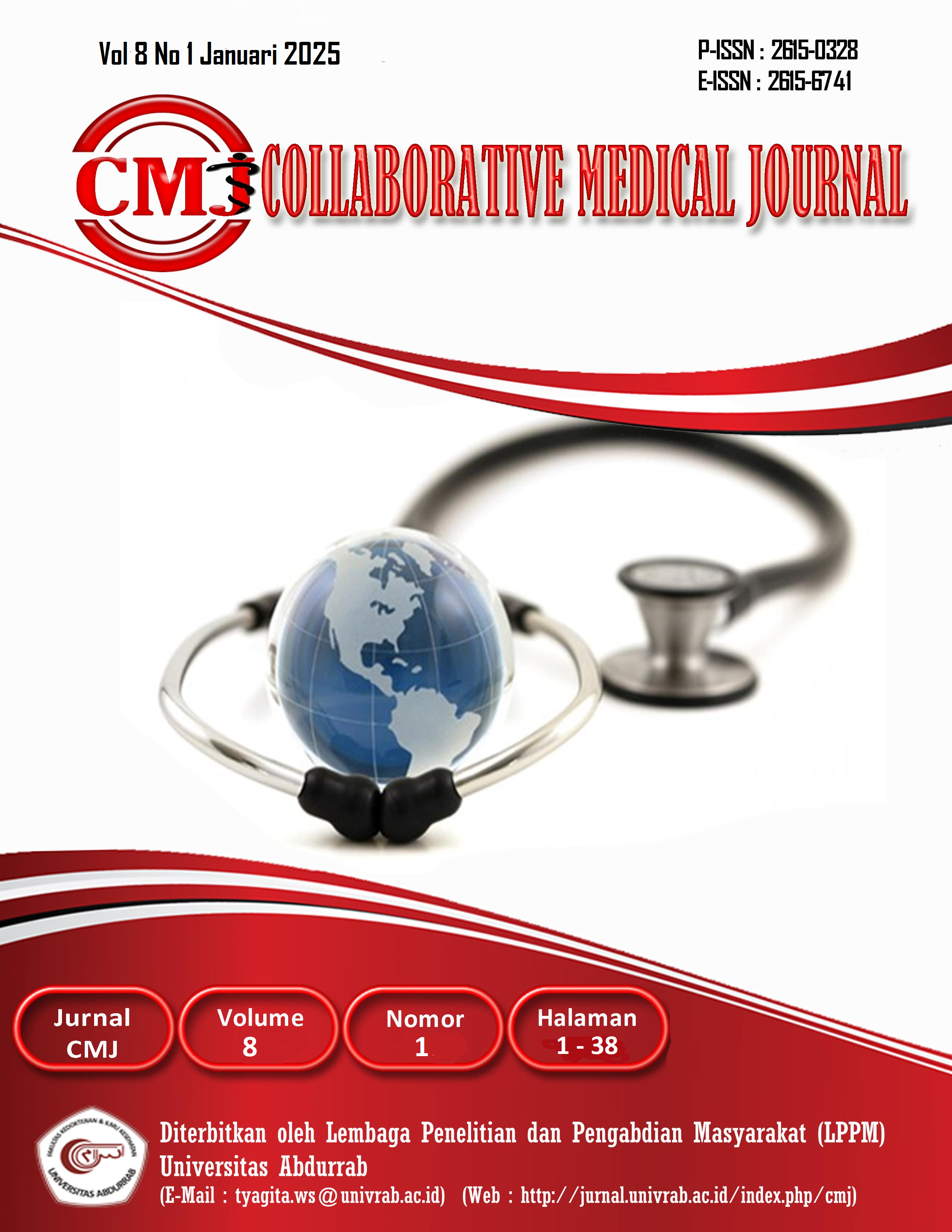PENGARUH GEL PUTIH TELUR BEBEK TERHADAP PENYEMBUHAN LUKA INSISI PADA MENCIT DIABETES
DOI:
https://doi.org/10.36341/cmj.v8i1.5809Keywords:
Diabetes Mellitus, Incision Wound, Wound Healing, Duck Egg WhiteAbstract
The International Diabetes Federation (IDF) in 2019 stated that around 463 million people aged 20-79 years in the world suffer from diabetes mellitus. Indonesia is ranked seventh in the world suffering from diabetes mellitus. The highest wound prevalence in the world is incision wounds with a prevalence of 48%. Diabetes mellitus can inhibit the healing of incision wounds, because it increases the risk of infection due to impaired metabolic activity. Egg white is one of the traditional ingredients that can be used to heal incision wounds. In this study, duck egg white was used to see the effect of duck egg white gel on healing incision wounds in diabetic mice. This study is an experimental study with a post-test only with control group design with 16 mice divided into a positive control group, a negative control group, treatment group 1 with 10% duck egg white gel and treatment group 2 with 20% duck egg white gel. The treatment in the form of mice injected with alloxan 0.05 ml/head and incised on the back of the mouse with a length of 1 cm and a depth of 0.2 cm and the measurement of the remaining wound length using a caliper on days 3, 5, 7, and 14. Based on the One Way Anova test on days 3, 5, 7, and 14, a p value <0.05 was obtained which indicated that duck egg white gel with a concentration of 10% and 20% was effective in accelerating the healing of incision wounds in mice. Duck egg white gel with a concentration of 20% had the most adequate effectiveness in healing incision wounds in diabetic mice. Based on this study, administration of duck egg white gel with a concentration of 10% and 20% was effective in healing incision wounds in diabetic mice.
Downloads
Downloads
Published
Issue
Section
License
1. Copyright of all journal manuscripts is held by the Collaborative Medical Journal (CMJ)
2. Formal legal provisions to access digital articles of electronic journal are subject to the provision of the Creative Commons Attribution-ShareAlike license (CC BY-NC-SA), which means that Collaborative Medical Journal (CMJ) is rightful to keep, transfer media/format, manage in the form of databases, maintain, and publish articles.
3. Published manuscripts both printed and electronic are open access for educational, research, and library purposes. Additionally, the editorial board is not responsible for any violations of copyright law.
licensed under a Creative Commons Attribution-ShareAlike 4.0 International License.





